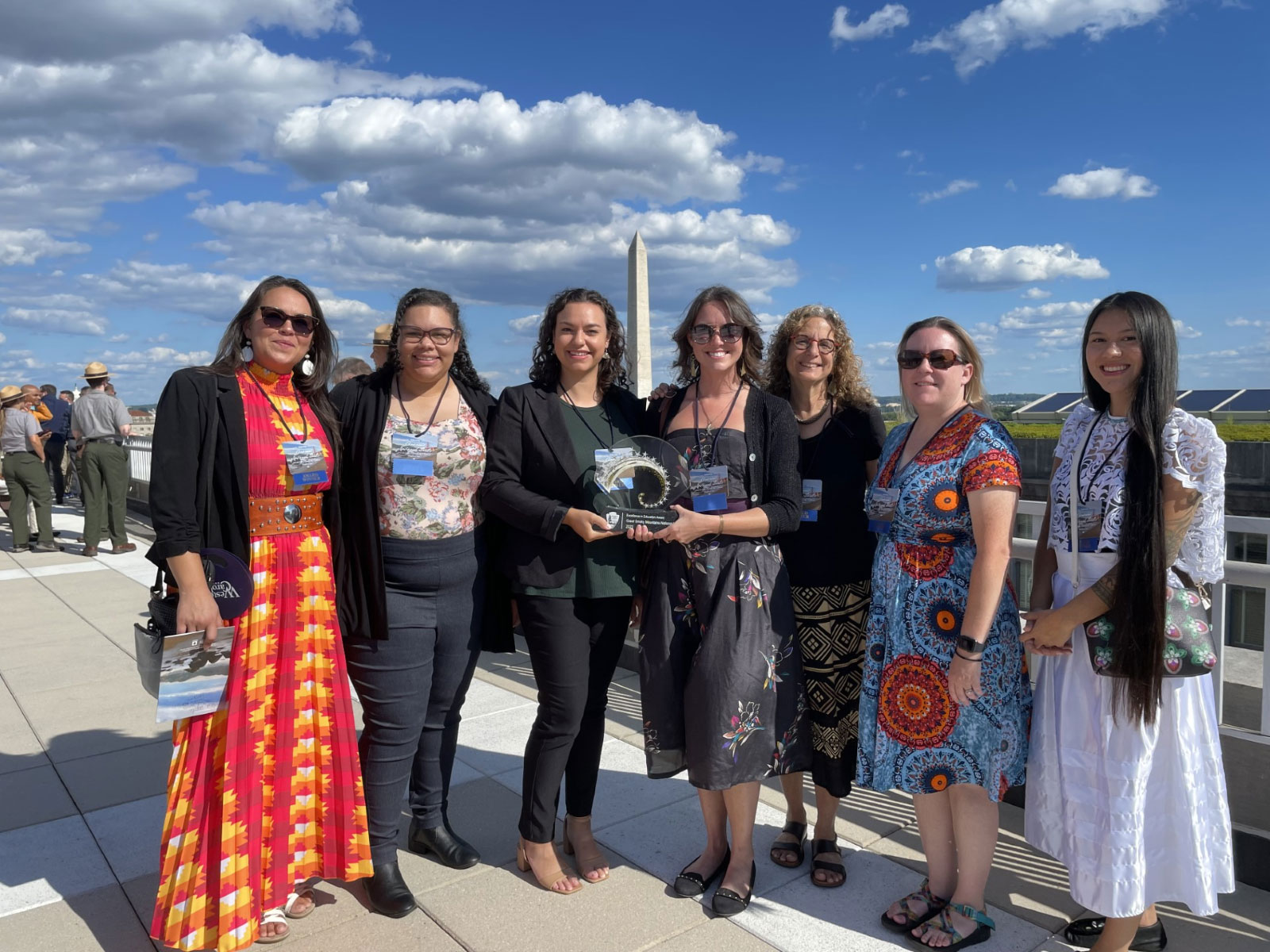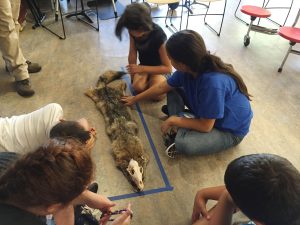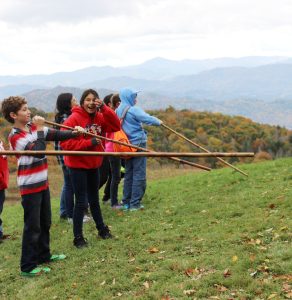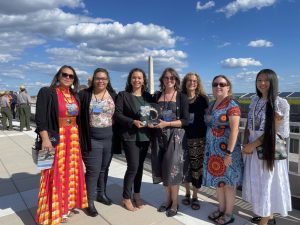
A labor of love ten years in the making has earned Great Smoky Mountains National Park, together with a long list of partners including the Eastern Band of Cherokee Indians’ New Kituwah Academy and Cherokee Preservation Foundation, the National Park Service’s 2023 Excellence in Education Award.

“The award is nice, because it’s recognition of the work, but having the community input and then having the schools in Cherokee use it as an example of a way to integrate culture and education into their classrooms—to me, that’s the award right there,” said Susan Sachs, the park’s education branch coordinator.
The award recognizes the park’s Seeking Paths in Nature program, an educational curriculum distributed to teachers at 42 public schools in Western North Carolina. It seeks to educate students on the tribe’s ongoing cultural importance through lessons that integrate elements of Cherokee identity with concepts related to subjects ranging from math and science to history and language arts.
One unit focuses on corn, asking students to work with Punnett squares to predict what color subsequent generations will be based on dominant and recessive genetic traits. They also learn traditional Cherokee stories and talk about the health benefits of corn versus wheat. Another unit, dealing with river cane, covers the species’ habitat needs and asks students to analyze GIS layers to figure out where it might grow most successfully. Their schoolyards often turn out to be prime habitat, and the curriculum includes information about organizations that can help schools create river cane plantings.
“Each unit is set up to be interdisciplinary and touch on more than just one subject area,” Sachs said. “Some are a little bit more science-heavy, and others are a little bit more social studies- or language arts-heavy.”

SPiN started in 2014 as a program at Cherokee Middle School funded through a Cherokee Preservation Foundation grant awarded in 2013. The program was so successful that the foundation wanted to share it with a larger audience, including with non-Cherokee students living outside the Qualla Boundary. Doing so would require hiring a program director, and Jessica Metz, a science teacher at the middle school at the time, jumped at the opportunity.
“I went to my principal and said, ‘I’m going to apply for that job,’” Metz said. She was excited by the opportunity it offered to connect people to interesting and important lessons, and to help educators accurately and respectfully integrate Cherokee culture into their classrooms.
Metz spent much of the summer of 2014 in the park, learning how rangers conduct interpretive programs and what standards they use to develop curriculum. She helped them integrate Cherokee culture into several existing programs, and when the school year began, she started putting together small kits to help teachers execute these lessons.
“I had a stack of Tupperware boxes in my office, and each one had a sticky note on it,” she said. “I started putting in resources that I was finding and books that were relevant with it and any kind of educational resources and activity materials.”
Metz is not Cherokee but has spent her entire professional career on the Qualla Boundary. And throughout the process, she and others who led the SPiN effort over the years have sought—and received—ample input from tribal members on the curriculum’s development.
“None of this was done in isolation,” she said. “None of this was just me. Every single step of the way, I’m asking for help with translations and language. I’m verifying information about whatever the history is or the science. I am always asking, always vetting, because I am not the expert and I understand that.”

In creating the curriculum, park service staff held brainstorming sessions with classroom teachers, community leaders, members of the Cherokee Speakers Council, and members of the community clubs where the tribe’s grassroots leadership flourishes. Then, Sachs said, they took those ideas to develop lesson plans that they showed to classroom teachers to ensure they were appropriate from an educational perspective. They shared the result with a different set of community members to get another wave of feedback before arriving at a final product.
Metz left her position as SPiN director in 2016 after she began to miss building relationships with students in a way that’s only possible to do as a classroom teacher. Now a teacher at the Cherokee immersion school New Kituwah Academy, Metz stays connected with SPiN by helping to review new curriculum and teaching SPiN lessons to her own students.
The program has grown significantly since Metz began pressing sticky notes on tiny Tupperware containers in 2014. Now the lesson kits are much larger—the curriculum includes six units for middle school grades, with three more units currently in development. These lessons reach thousands of students every year across a seven-county region. Someday, Sachs hopes, the program will expand to include lessons for elementary and high school grades as well.
“Our goal is to integrate Cherokee culture into all of our units for any student, anytime, whether they’re coming on a field trip or they’re coming to a virtual program or we’re going into the classroom,” Sachs said. “We would like to indigenize our curricula to recognize and honor the Cherokee presence.”
Subscribe to get the latest posts sent to your email.
The Great Smokies Welcome Center is located on U.S. 321 in Townsend, TN, 2 miles from the west entrance to Great Smoky Mountains National Park. Visitors can get information about things to see and do in and around the national park and shop from a wide selection of books, gifts, and other Smokies merchandise. Daily, weekly, and annual parking tags for the national park are also available.